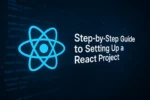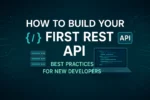What Are the Types of Web Design?

In today’s digital world, your website is often the first impression you make. Whether you’re building a portfolio, launching a business, or expanding an online brand, the design of your website plays a vital role. But here’s something many people don’t realize — web design isn’t just one thing. There are several different types, and each one offers a unique experience depending on how your website will be used. Let’s take a deeper dive into the most common types of web design and what makes each of them distinct.
Static Web Design
A static web design is the most straightforward and traditional format. It’s built with fixed code and displays the same content to every visitor. This type of design works best for websites that don’t require frequent updates. Think of a small business brochure website or an artist’s online portfolio. It’s clean, stable, and fast-loading, but it can feel outdated if you’re aiming for interactive features or dynamic content.
Dynamic Web Design
In contrast to static design, a dynamic web design allows the content to change based on user interaction or real-time data. These websites are connected to databases and use scripts to serve updated content automatically. If you’ve ever visited a news site or a blog where new posts are added regularly, you’ve seen dynamic design in action. It’s flexible and powerful but requires more technical resources to manage.
Responsive Web Design
With so many people browsing the web from smartphones and tablets, responsive design has become the standard. This design approach allows websites to adapt fluidly to different screen sizes, maintaining usability and visual appeal across devices. Whether someone visits your site from a desktop or a mobile phone, the layout adjusts to deliver a seamless experience. It’s not only user-friendly, but it also helps your site rank better in search engines.
Adaptive Web Design
Adaptive web design is often confused with responsive design, but there’s a key difference. Instead of fluidly adjusting, adaptive websites detect the user’s device and load a pre-set layout designed specifically for that screen size. This method offers more control over how your content looks on different devices, which can be a big win for brand consistency. However, it also requires more effort in development, as you’ll need to create multiple versions of the site.
Single Page Web Design
Single page websites, often called SPAs (Single Page Applications), keep everything on one long scrollable page. Instead of loading a new page for every piece of content, SPAs use dynamic JavaScript to update content within the same page. These designs are sleek, modern, and perfect for storytelling or guiding users through a linear experience. They’re a popular choice for startups, product showcases, and personal brands looking for something clean and fast.
Parallax Web Design
Parallax design creates an immersive experience by using different scrolling speeds for background and foreground elements. This visual trick creates a sense of depth and motion, making the site feel interactive even if users aren’t clicking anything. It’s a favorite among creative professionals, design agencies, and brands that want to leave a lasting impression. While it looks stunning, it does require strong visuals and careful optimization to avoid slow loading speeds.
Minimalist Web Design
Minimalist web design focuses on simplicity. It strips away unnecessary elements and leaves only what’s essential. This style is elegant, professional, and easy on the eyes. It typically uses a lot of whitespace, clean typography, and simple navigation. Minimalism isn’t about having less content — it’s about presenting content in a way that feels intentional and uncluttered. It’s especially popular in tech, design, and fashion websites.
Illustrative Web Design
Illustrative design brings websites to life through custom illustrations, hand-drawn elements, and artistic visuals. This type of design is all about personality and storytelling. It’s great for brands that want to stand out, entertain, or build emotional connections with users. Whether it’s a playful cartoon character or a carefully designed landscape, illustrations can guide the user’s journey and reinforce your brand voice in a memorable way.
Typography-Focused Web Design
In some cases, typography becomes the hero of the website. A typography-focused design uses fonts as the main visual elements, often relying on large headlines, bold text styles, and strategic placement to draw the eye. When done right, this approach creates a clean, professional, and highly readable experience. It’s particularly effective for content-driven websites, such as blogs, news platforms, or copywriter portfolios.
Experimental Web Design
Last but not least, there’s experimental web design. This type pushes the boundaries of traditional web standards by using cutting-edge technology, unique navigation styles, and creative layouts. Experimental sites are often visually striking and highly memorable, but they can also challenge usability. These designs are typically used by artists, digital agencies, or brands looking to make a bold statement and leave users with something to talk about.






